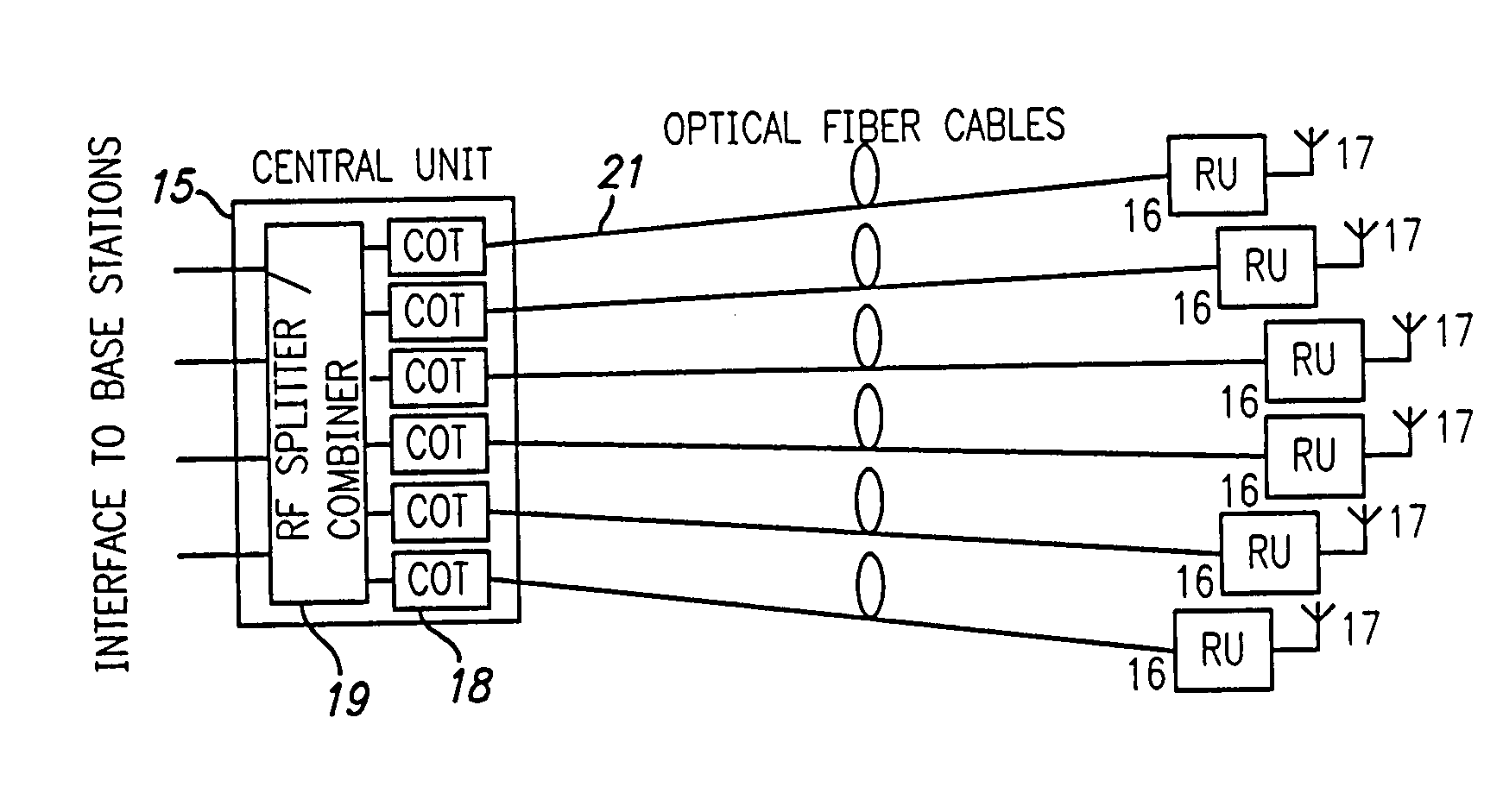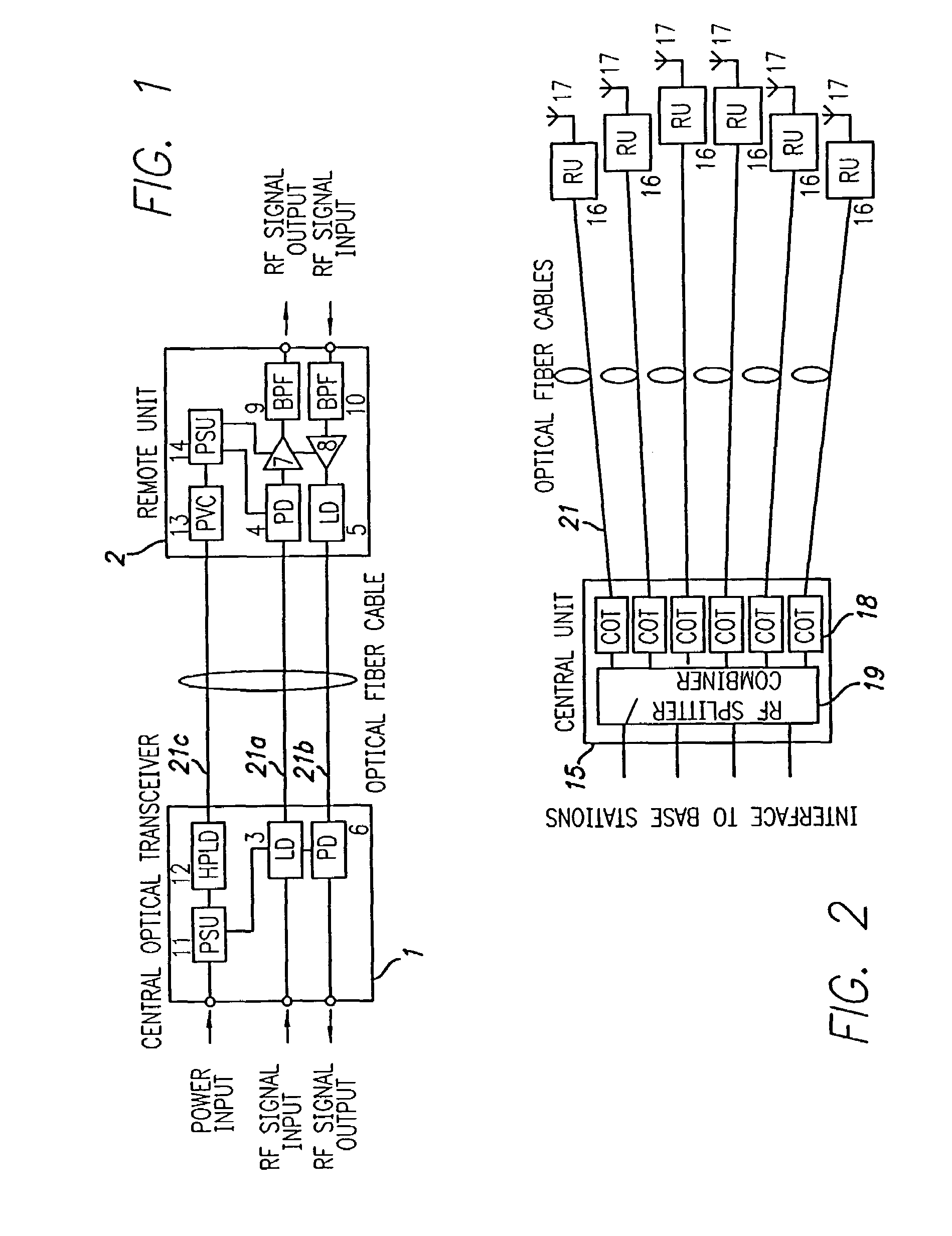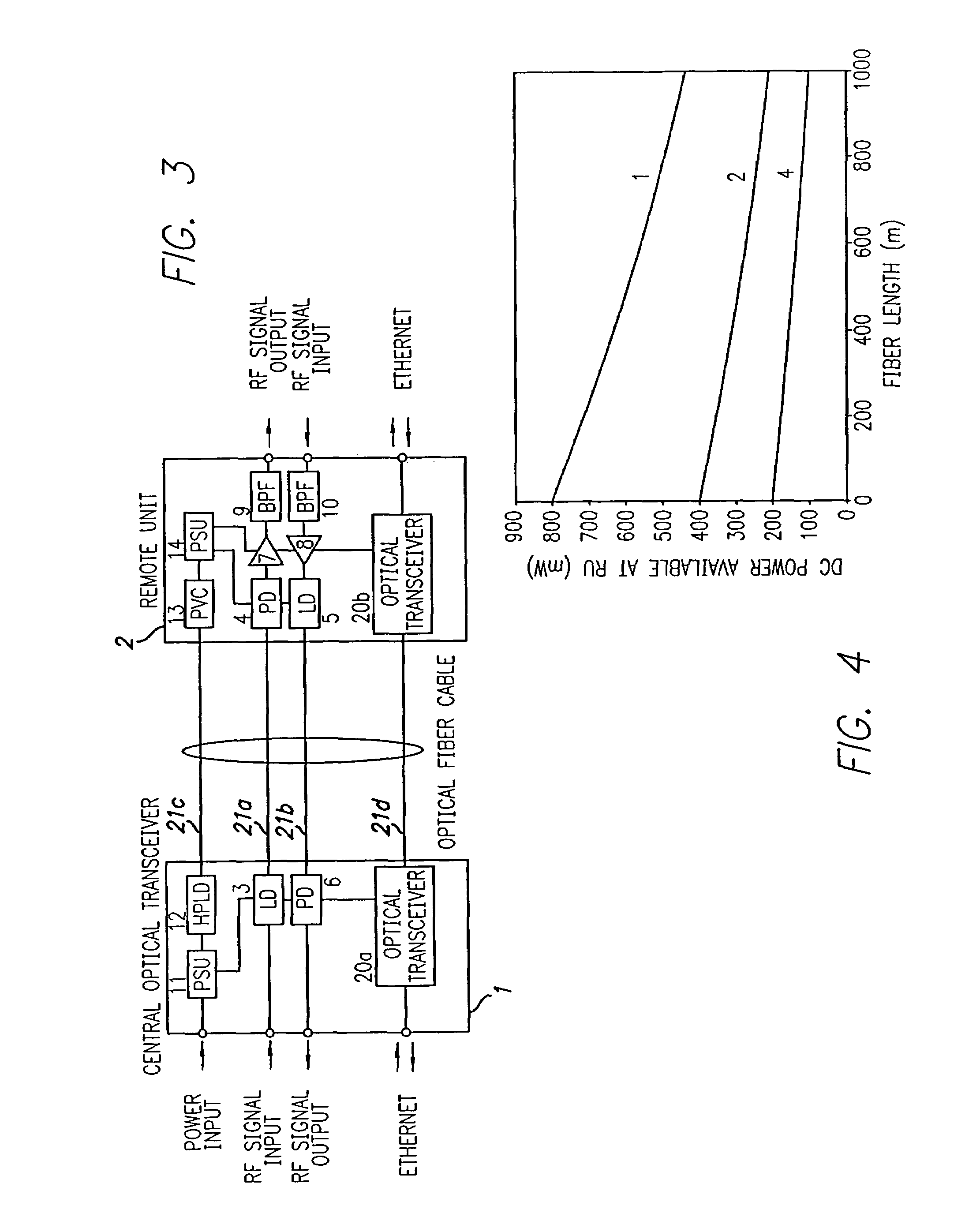Optical fiber communications method and system without a remote electrical power supply
a technology of optical fiber communication and remote electrical power supply, applied in electromagnetic transmission, electrical equipment, transmission, etc., can solve the problems of limited appeal, relatively short reach capability, and high cost of local electrical power supply
- Summary
- Abstract
- Description
- Claims
- Application Information
AI Technical Summary
Benefits of technology
Problems solved by technology
Method used
Image
Examples
Embodiment Construction
[0030]In the following description of preferred embodiments, reference is made to accompanying drawings which form a part hereof and in which is shown by way of illustration specific embodiments in which the invention may be practiced. It is to be understood that other embodiments may be utilized and structural changes may be made without departing from the scope of the preferred embodiments of the present invention.
[0031]FIG. 1 illustrates an optical communications system of the present invention. A central optical transceiver (COT) 1 is connected to one or more remote units (RU) 2 via optical fiber cable. The forward optical fiber data path or link comprises a laser diode 3 in the COT and a photodiode 4 in the RU linked using an optical fiber 21a. The photodiode 4 converts optical data signals from the COT to radio frequency signals for transmission by an antenna (not illustrated in FIG. 1).
[0032]The reverse optical fiber data path or link comprises of a laser diode 5 in the RU an...
PUM
 Login to View More
Login to View More Abstract
Description
Claims
Application Information
 Login to View More
Login to View More - R&D
- Intellectual Property
- Life Sciences
- Materials
- Tech Scout
- Unparalleled Data Quality
- Higher Quality Content
- 60% Fewer Hallucinations
Browse by: Latest US Patents, China's latest patents, Technical Efficacy Thesaurus, Application Domain, Technology Topic, Popular Technical Reports.
© 2025 PatSnap. All rights reserved.Legal|Privacy policy|Modern Slavery Act Transparency Statement|Sitemap|About US| Contact US: help@patsnap.com



